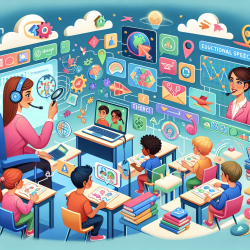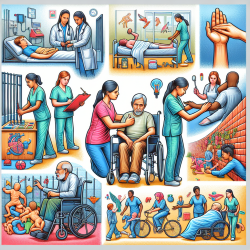Introduction
In the rapidly evolving landscape of educational psychology, the integration of technology has become not only beneficial but essential. Online speech therapy is one such innovation that is transforming the way we support children's communication development in schools. This blog explores how educational psychologists can leverage technology to enhance outcomes for children requiring speech therapy services.
The Power of Online Speech Therapy
Online speech therapy offers a flexible, accessible, and data-driven approach to speech and language interventions. It allows therapists to reach students in diverse geographical locations, ensuring that no child is left without the necessary support. For educational psychologists, this means an opportunity to provide comprehensive care plans that are both efficient and effective.
Data-Driven Decisions in Therapy
One of the key advantages of online speech therapy is the ability to make data-driven decisions. Digital platforms provide detailed analytics on a child's progress, enabling therapists to tailor interventions to meet individual needs. This data-centric approach ensures that therapy is not only personalized but also measurable, allowing for adjustments that can lead to better outcomes.
Benefits for Schools and Students
- Accessibility: Online platforms break down geographical barriers, providing access to specialized therapists regardless of location.
- Flexibility: Sessions can be scheduled to fit the student's and school's timetable, reducing disruptions to the learning process.
- Engagement: Interactive digital tools can make therapy sessions more engaging for children, promoting active participation.
- Cost-Effectiveness: Schools can save on costs related to in-person therapy sessions, such as travel expenses and facility usage.
Implementing Online Speech Therapy
For educational psychologists looking to implement online speech therapy in schools, it is crucial to select a platform that is both user-friendly and secure. Additionally, collaboration with teachers and parents is essential to ensure that therapy goals align with educational objectives and home support. Regular training and updates for staff involved in the therapy process can also enhance the effectiveness of the program.
Conclusion
As we strive to provide the best possible outcomes for children, integrating technology into our therapeutic practices is a step towards self-actualization for educational psychologists. By embracing online speech therapy, we can offer a more inclusive, efficient, and effective approach to supporting children's communication needs. The next step is clear: harness the power of technology to transform the landscape of speech therapy in schools.










